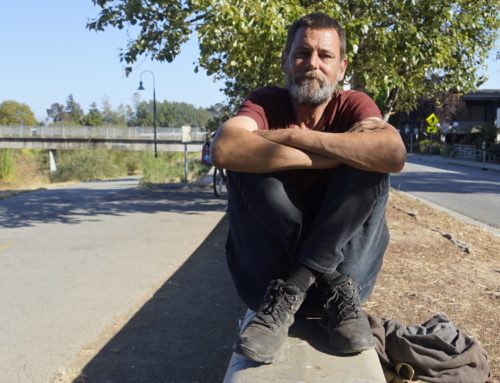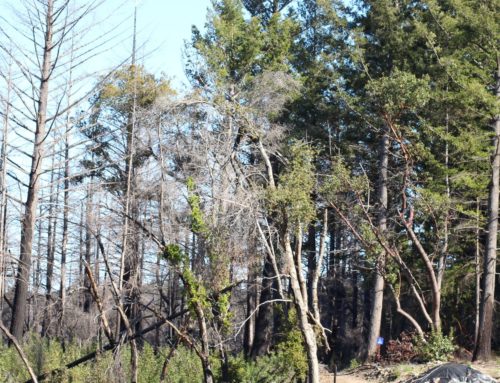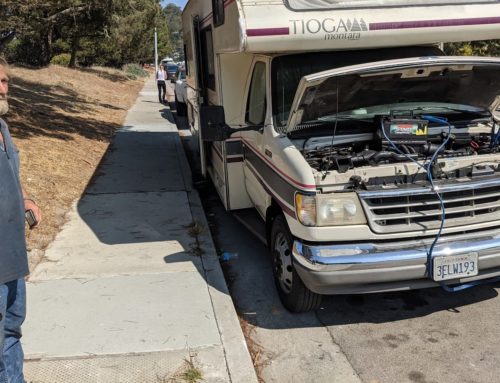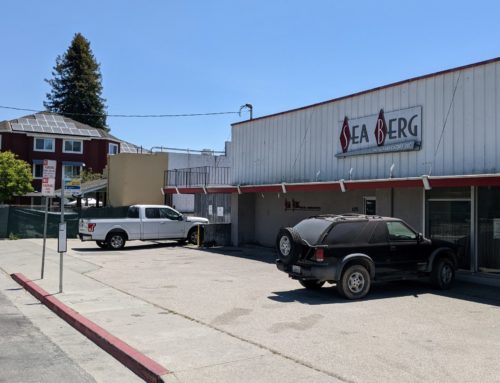We hear from Santa Cruz County Supervisor Bruce McPherson with an update on the CZU Lightning Complex Fire. McPherson’s district covers San Lorenzo Valley, which has been hard hit by the fire. McPherson shares an update on the fire response. He also describes his tour Monday of San Lorenzo Valley and what damage he saw.
Transcript below.
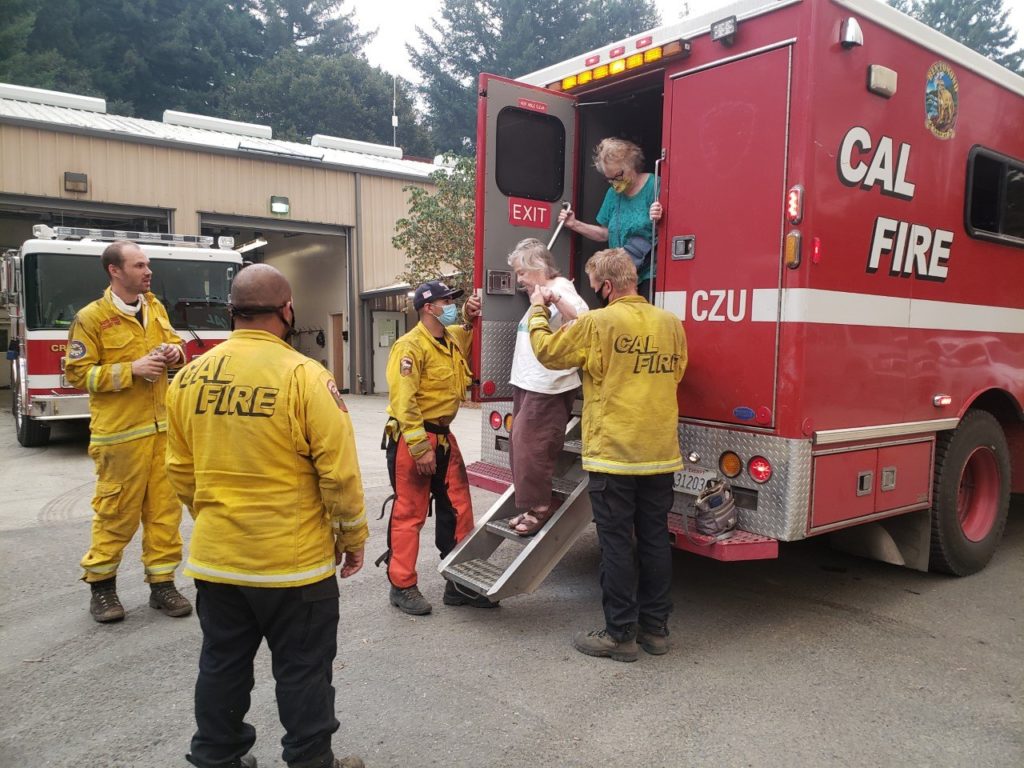
Transcript
Santa Cruz Local offers its this transcript free as a public service. Transcripts usually are only available to Santa Cruz Local members.
Santa Cruz Local depends on memberships from people like you to make sure vital information can be available to all. Can we count on your help?
Kara Meyberg Guzman: Santa Cruz Local is a local news podcast, newsletter and website serving Santa Cruz County. We’re journalists who co-founded this company last year. We built this because we saw a huge gap in local news coverage. We’re almost entirely funded by memberships from locals like you. If you believe in local journalism, join our member community. Member signup is at santacruzlocal.org/membership.
I’m Kara Meyberg Guzman
This is Santa Cruz Local.
[MUSIC FADE OUT]
The CZU Lightning Complex Fire has grown to 122 square miles on Santa Cruz County’s North Coast and San Lorenzo Valley this week. Nearly one in three county residents have been ordered to evacuate.
Monday night, the fire was 13% contained. At least 208 homes have been destroyed and 21 homes damaged, according to Cal Fire. Flames threaten at least 25,000 more buildings.
In recent days, firefighters have held their ground against walls of fire and smoke. They’ve protected the downtown cores of Boulder Creek. Felton. Ben Lomond. They’ve built a fire break from Highway 1 up through Wilder Ranch and down to Highway 9. It shields the City of Santa Cruz.
In today’s episode, we’ll hear from Santa Cruz County Supervisor Bruce McPherson. His district covers San Lorenzo Valley and parts of Scotts Valley and Santa Cruz. McPherson himself was forced to evacuate. He shares an update on the fire response. He also describes his tour Monday of San Lorenzo Valley, and what damage he saw.
Before we hear from Bruce, you should know that our website, santacruzlocal dot org, has much more reporting on the fire. There you’ll find comprehensive wildfire reports from Santa Cruz Local Editor Stephen Baxter. You can also visit Santa Cruz Local’s Wildfire Resources page, for maps, info for evacuees, and how to help. That’s at santacruzlocal dot org slash wildfire. The links are in our show notes.
Now, here’s Bruce McPherson. I spoke to him by phone Monday evening. I asked him, what kind of help does our county need right now from state and federal leaders?
BRUCE MCPHERSON: We need more air support for…it’s just so hard for us with the terrain and so forth, for firefighters to go into the canyon. They just can’t go into the canyon, that’s you know, a death trap it could be you know, so we need more air support the from the state as soon as we get it. And believe me, with more than 500 fires in the state. We know that there’s a lot of pressure to go everywhere but this is something that we can hold the line a lot better if we get the air support. And we are getting more than, you know as the days go on. As a matter of fact, I’m in Scotts Valley at the base camp right here at Skypark. And there’s more help coming in from the state for ground crews as well as I understand more air support coming in, in the next day or two.
KMG: Great. When I spoke to Supervisor Coonerty a couple of days ago, he said firefighters was our greatest need. What’s your take on the current status with the size of our firefighting crew?
MCPHERSON: You know, I just don’t know if I have that number. It’s ever changing. But we are getting… I mean, there’s fire personnel in this field from everywhere throughout the state and we are getting a lot more.
[Editor’s note: Monday, 1,609 personnel fought the CZU August Lightning Complex Fire, according to Cal Fire.]
I wish I had the exact number, but we have, we have a lot more people than we did two or three days ago for sure. And right now, you know, this thing, nature was working against us. The winds came in, and it took off from southern San Mateo County. And then the smoke just hung there and we couldn’t get helicopters in to drop water or retardant to which would’ve really helped early on.
But this fire grew from to 40,000 acres within a 24-hour period because of the bad weather conditions in the — and then the three days prior to starting it was 90 to 100 degrees here along the coast. And it just was the worst possible time. But the better news is, the fire districts deal with Cal Fire and there’s nine agencies that are unified in a command now. So people are working together a lot better than, I mean, it just is developed where everybody’s on the same page to a better degree than they were, you know, four or five days ago.
And that means that the fire districts, representatives from the fire districts, during the morning every day get together with Cal Fire and say, OK, Cal Fire’s in charge of this. But they say, OK, this is what we’ll do. This is what we should do. This is where the hotspots are, and so forth.
So they, I think they have a very much better coordinated working arrangement today than they did a couple days ago.
KMG: Great. That’s, that’s some good news for our listeners. I wanted to shift gears and ask you about the damage that you saw in the tour you took today of the valley. What did you see?
MCPHERSON: It’s unbelievable. Fire is unforgiving and unforgivable. It’s just — we went up to the Braemoor [Drive], up Pine Flat [Road], Felton Empire [Road]. It’s pretty devastating and it’s just scary and it’s gonna be a long road back for a lot of people. We know that. We don’t know how many homes will have been taken out when this is all over. And I hope it can get over, we could stop the fires from advancing the next couple days or certainly within a week.
But it was devastating. It is. I just feel for the people. Just, literally things burned to the ground. I mean, houses, you see bikes and you see, you know, just every kind of furniture you can imagine — just, it’s just leveled. It’s just leveled.
KMG: We’ve heard from several listeners and readers who are worried about their homes on Pine Flat, Empire grade. Where you went, what can you say to be more specific about the kind of damage that you saw there?
MCPHERSON: Well, I mean, it was just, it was somewhat spotty. I mean, there was one house that was completely gone and another house across the street that was still standing. So it’s just the pattern that it takes. It’s unpredictable about how it can happen. And believe me, I’m not, I’m not the expert to say why or how it happened, but it just didn’t come across a full swath of one side of the street and take it and on the other and take it all out. There were some, some homes that were still standing. But those that were gone, were just there was nothing left. It was down to the foundation.
And I don’t know, there’s — I’m not an expert as I say, but you just have to ask them why and it’s just the shift of the winds, for the most part. It’s why that happens.
KMG: And what can you say about the core, the downtown areas of Boulder Creek, Ben Lomond, Felton?
MCPHERSON: I think they, well, they feel like they can hold the fire off at this point. Especially if we get more air support tomorrow. I mean, we’re here now at what six o’clock or something like that on Monday night and I think with, if they have the visibility they’ll be able to hold that off. It’s really tough to go parcel to parcel or home to home to try to get this.
You’ve got to have a line of attack. I’m just speaking as a fire personnel, with — you just got to get a line and hold to it. And they’re back-burning as I think they call it, backfiring, or back-burning some of the area where they, they’re taking low brush, and so there’s not the heat that really will carry the fire as quickly as it has to date. So they’re able to address it to that point.
And I don’t know, I just hope we can get a grip on this in the very near future. And I don’t know how to put a date. This is not my expertise to say when it might really be all taken out.
KMG: I understand. Two more questions. I’m wondering what your message is to your district. What do you want people to know right now?
MCPHERSON: Oh.
Your fire department personnel are doing everything day and night that they can to protect your business or your home or your community at large. And they are phenomenal, committed people.
And for those who have lost your home, I feel for you. It is a long road back and it’s, we’ll, we’re going to work the best we can to make that as easy as possible as a county, and a county board of supervisors, to allow people to get on the road to recovery as quickly as we can.
And believe me, the whole community feels for you. And, we’ll, we’ll be with you. We’re not going to give up on you. And your fire department personnel have not done that. I mean, they have been there, front and center. 24-7. And you can’t thank them enough. They are just the most committed, dedicated people you can imagine.
KMG: And Bruce, how’re you doing? I assume your family had to evacuate as well.
MCPHERSON: Yes, we did have to evacuate as well. And I really appreciate those who did evacuate. I think that they’re progressive. I don’t know how they put it. There is staged evacuation areas. And Sheriff Hart will say, the way we did it, you know, we went from the top of the valley down into Scotts Valley, the city of Santa Cruz and UCSC. And it really worked out well. It was a safe, relatively well, well, well-controlled evacuation center.
I know some people didn’t want to leave. But boy, that makes it more difficult when, and if basically, if firefighters should have to get in. So I just encourage anybody who’s standing firm or think say this is not going to get to me. Don’t do it. Don’t be that proud. Just get out.
And this will be the main surge. I am very hopeful it will be over in the next couple days or week. And then we can go back to see what’s there and what we need to do. But it’s, it’s really critical that we, we have you know, people evacuated so the public safety personnel can perform the jobs that they want to do and they can do the best. They do a tremendous job at it.
KMG: Bruce, thank you so much for your time. I know you’re so busy. I really appreciate it.
MCPHERSON: OK, you’re welcome. Have a good night. All right. Goodbye.
[MUSIC]
KMG: Thank you to our Santa Cruz Local members. Your support makes our journalism possible.
Thank you especially to our Guardian-level members: Chris Neklason, Patrick Reilly, Elizabeth and David Doolin, Elena Cohen and Steve Ritz, and the Kelley Family.
Please join our member community. About 80% of Santa Cruz Local’s funding comes directly from readers and listeners like you. Support local journalism at santacruzlocal dot org slash membership.
The link is in our show notes. Also in our show notes: the link to sign up for Santa Cruz Local’s free newsletter. We’ll send you updates about the fire and other local news.
Thanks to Trimpot for the music.
Thanks for listening to Santa Cruz Local.
Kara Meyberg Guzman is the CEO and co-founder of Santa Cruz Local. Prior to Santa Cruz Local, she served as the Santa Cruz Sentinel’s managing editor. She has a biology degree from Stanford University and lives in Santa Cruz.


